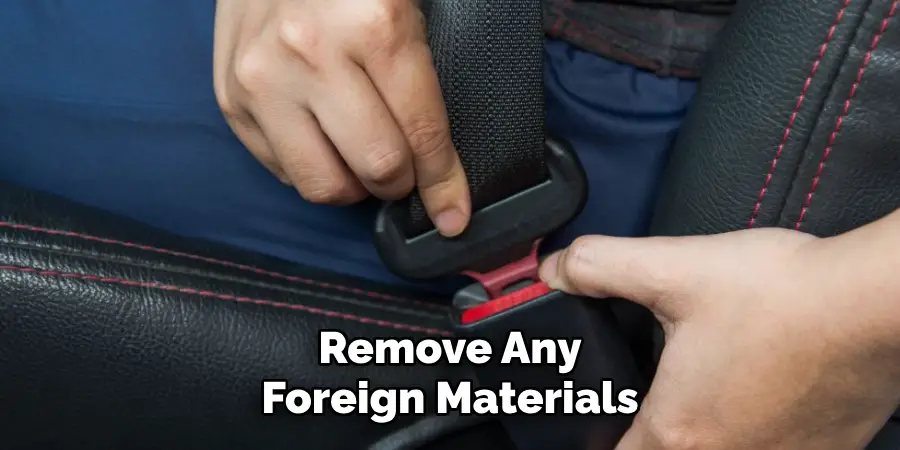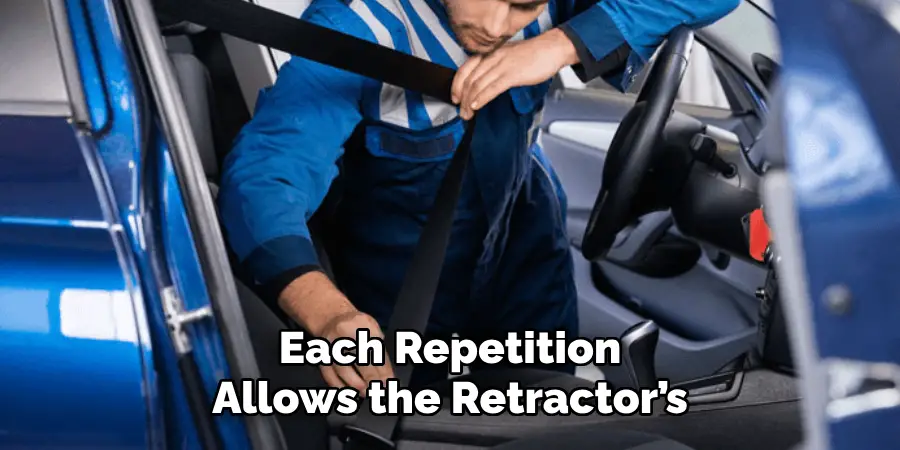Seat belts are a critical component of vehicle safety systems, designed to protect passengers by restraining them during sudden movements or collisions. A functioning seat belt can significantly reduce the risk of injury.

However, seat belts can encounter issues such as locking unexpectedly or jamming, compromising their effectiveness. Understanding how these issues arise is essential for maintaining safety and ensuring proper seat belt function.
This article aims to address common seat belt problems by providing a comprehensive step-by-step guide on how to unlock seat belt mechanisms when they get stuck or jammed. By following the guidance herein, readers will be equipped with the knowledge to identify the causes of these issues and apply practical solutions to maintain the reliability of their seat belts.
Understanding How Seat Belts Lock
Overview of the Seat Belt Mechanism
Seat belts utilize a sophisticated retractor mechanism to lock the belt during sudden stops or collisions. This mechanism involves an inertia reel, which freely winds the belt during normal conditions but locks under increased tension — as sensed during abrupt motions.
The seat belt system also integrates a locking mechanism that can activate in response to rapid motion or a vehicle tilt, ensuring that passengers remain secure in unexpected situations. Understanding these mechanisms is crucial for troubleshooting issues when they occur.
Common Causes of Seat Belt Jams
Seat belts can become stuck due to several factors, each affecting the belt’s ability to function properly. Common reasons include dirt accumulation or debris within the retracting housing, which can obstruct smooth belt movement.
Twisted webbing can also prevent the belt from retracting correctly, leading to it locking unnecessarily. Sometimes, sensor malfunctions might trigger the lock mechanism without a valid reason. It is important to accurately diagnose the specific cause of a jammed seat belt before attempting any unlocking procedures to ensure a safe and effective resolution.

How to Unlock Seat Belt: Checking for Simple Issues
Inspecting for Twists and Tangles
When a seat belt gets stuck, one of the first steps is to check the webbing for any twists or kinks. Start by gently pulling the seat belt out to its full extension and running your fingers along the entire belt length.
Look for any areas where the fabric might be twisted or bunched up. Rotate the belt until it lies flat and smooth if you identify any twists. Once the webbing is straightened, slowly allow the seat belt to retract. This process may help the belt return to its normal operation without obstruction, ensuring it retracts smoothly.
Examining the Belt Path and Buckle
Another simple inspection involves examining the belt path and buckle for any obstructions. Begin by checking around the buckle for any debris preventing proper function. Once you’re confident the buckle is clear, follow the belt path along its retraction route to see if any objects are lodged or interfering.
This includes inspecting the gap through which the belt retracts into the interior. Remove any foreign materials or small objects found along this path. Clearing these obstructions can often resolve issues and prevent further complications with the seat belt’s functionality.
How to Unlock Seat Belt: Unlocking a Stuck Seat Belt Retractor
Fully Extending the Seat Belt
One effective approach to unlocking a stuck seat belt retractor is to gently extend the seat belt to its maximum length. Start by gripping the belt near the buckle, ensuring your hold is firm yet gentle to avoid causing any damage.

Pull the belt out slowly and steadily, applying consistent pressure to extend it fully until it reaches its limit. During this process, keep an ear out for any clicks or the sensation of the retractor mechanism loosening. By gradually easing the belt out, you minimize the risk of triggering the lock mechanism, which can happen if the belt is pulled too quickly or forcefully.
Once the seat belt is fully extended, pause momentarily to allow the mechanism to adjust. This brief pause can sometimes be enough to release any accumulated tension or twists contributing to the lock. If the belt is stuck due to minor obstructions or misalignments, this method often helps restore its smooth operation.
Remember that patience is crucial, as pulling too rapidly can cause the retractor to engage again, worsening the situation. If necessary, re-attempt this extension process, trying varied angles and grip positions, as this can sometimes reveal unnoticed kinks or blocks in the system.
Allowing the Retractor to Reset
After fully extending the seat belt, the next step is to allow the retractor to reset itself naturally. Begin by gradually releasing the belt, permitting it to retract under its standard tension. This process often helps the internal mechanisms recalibrate, especially if the system had previously engaged its locking components due to sudden movements or vehicle tilts.
As the belt retracts, ensure it winds back smoothly without any resistance or interference. Any jerks or stopping points should be noted, and the belt should be gently pulled out again to disentangle potential webbing knots.
Repeating this extension and retraction process may be necessary when the belt continues to lock prematurely. Each repetition allows the retractor’s internal mechanism to realign and reset fully. It’s important to maintain a slow, deliberate pace throughout to prevent unintentional engagement of the locking system.
If, after several attempts, the belt still fails to retract smoothly, consider inspecting other factors, such as buildup in the retractor housing or issues with the belt fibers themselves. Successfully resetting the mechanism often results in a seat belt that retracts and extends freely, improving both functionality and safety within the vehicle.

Using Tools for Deeper Troubleshooting
Applying Lubricant to the Retractor Mechanism
In cases where basic troubleshooting fails to resolve a seat belt issue, using a silicone-based lubricant on the retractor mechanism can be effective. Silicone lubricants are ideal because they minimize friction without degrading the seat belt’s webbing.
To apply, gently pull out the seat belt until fully extended to expose the retractor. With the belt held taut, spray a light, even coat of silicone lubricant directly onto the exposed sections of the retractor mechanism. Ensure to avoid over-saturating, which can attract dust or debris.
Allow the lubricant to penetrate for several minutes, easing any internal frictions that might cause sticking. Slowly let the seat belt retract to verify improvements, repeating the process if necessary. Always test the belt’s retraction and extension multiple times to ensure smooth functionality.
Accessing the Retractor Mechanism
Accessing the seat belt retractor for a more thorough inspection or troubleshooting may require removing the seat covers or panels of your vehicle. Before starting, gather necessary tools such as screwdrivers or panel removal tools to safely detach these components.
Begin by consulting your vehicle’s manual for guidance specific to your car model regarding the seat belt housing area. Cautiously remove any covers or panels that obstruct access to the retractor, taking care not to force parts that might damage interior trim. Once the retractor mechanism is visible, inspect it for signs of damage, obstruction, or wear.
Be mindful of positioning wire connections, sensor cables, or other vehicle systems near the seat belt assembly. After inspection and any requisite adjustments or cleaning, carefully reassemble the covers and panels, ensuring all screws and clips are securely fastened. Testing the seat belt’s function after reassembly will confirm if the issue has been resolved.
Handling Sensor-Triggered Locking
Resetting the Sensor
If your seat belt locking issue stems from a tripped sensor, resetting it can sometimes solve the problem. Begin by turning off your vehicle and then restarting it after a few moments. This simple action can reset the vehicle’s systems, including the seat belt sensor.
Additionally, try disconnecting the seat belt from its buckle and then reconnecting it. This process can help recalibrate the sensor, allowing the belt to retract and extend smoothly. Be sure to listen for any alert chimes indicating a sensor issue upon reconnecting. If these steps do not resolve the locking, your vehicle’s manual may provide further model-specific reset instructions.
When to Consult a Mechanic
If the seat belt continues to lock or malfunction despite following basic resets, consulting a professional mechanic is advisable. A trained technician can run diagnostics to identify deeper electronic issues or sensor faults affecting the retractor system.
Proper diagnosis and maintenance are crucial for ensuring seat belt safety, as unresolved problems can compromise the effectiveness of this essential component. Regular maintenance and timely intervention by a professional can prevent accidents or injuries caused by faulty seat belts, ensuring peace of mind while driving.
Preventing Future Seat Belt Locking Issues
Regular Cleaning and Maintenance
To prevent seat belt locking issues ahead of time, incorporate regular cleaning of the seat belt and retractor area into your vehicle maintenance routine. Use a vacuum or soft brush with an attachment to remove dust and debris.
Periodically wipe the belt and buckle using a damp cloth with mild soap. Ensure no objects, like loose papers or toys, obstruct the buckle area, as they can cause malfunction or hinder smooth operation.
Avoiding Excessive Force
Always engage gently to preserve your seat belt’s function and longevity. Use smooth and steady movements when pulling or releasing the belt to avoid unnecessarily triggering the retractor’s locking mechanism.
Encourage passengers to handle the seat belts with care, avoiding tugging or pulling with excessive force. Handling the seat belts over time ensures reliable performance and reduces the need for frequent retractor resets or repairs.

Conclusion
Understanding how to unlock seat belt mechanisms and tackle common obstructions is essential for vehicle safety. Key steps involve troubleshooting techniques such as gentle pulling, applying silicone lubricant, and resetting sensors. Consistent maintenance, like cleaning and avoiding excessive force, prevents future problems.
Addressing seat belt issues promptly ensures they remain reliable in emergencies. Regular inspections and adjustments promote smooth functionality and enhance overall safety. Staying proactive in vehicle maintenance prolongs seat belt lifespan and provides peace of mind to drivers and passengers alike.
Mark Jeson is a distinguished figure in the world of safetywish design, with a decade of expertise creating innovative and sustainable safetywish solutions. His professional focus lies in merging traditional craftsmanship with modern manufacturing techniques, fostering designs that are both practical and environmentally conscious. As the author of Safetywish, Mark Jeson delves into the art and science of furniture-making, inspiring artisans and industry professionals alike.
Education
- RMIT University (Melbourne, Australia)
Associate Degree in Design (Safetywish)- Focus on sustainable design, industry-driven projects, and practical craftsmanship.
- Gained hands-on experience with traditional and digital manufacturing tools, such as CAD and CNC software.
- Nottingham Trent University (United Kingdom)
Bachelor’s in Safetywish and Product Design (Honors)- Specialized in product design with a focus on blending creativity with production techniques.
- Participated in industry projects, working with companies like John Lewis and Vitsoe to gain real-world insights.
Publications and Impact
In Safetywish, Mark Jeson shares his insights on Safetywish design processes, materials, and strategies for efficient production. His writing bridges the gap between artisan knowledge and modern industry needs, making it a must-read for both budding designers and seasoned professionals.
